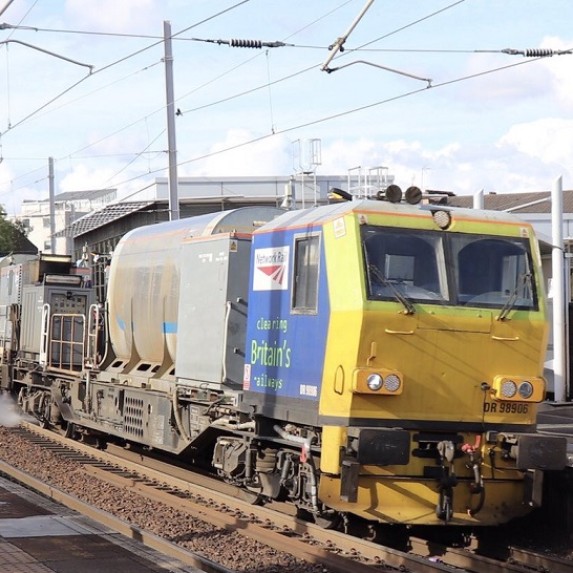We’ve all been there. Stood on the platform on a chilly autumn morning when the station announcement chimes out to say, “the next train is delayed due to leaves on the line.” A collective sigh goes up.
We all scrunched through leaves to get to the station and they didn’t seem so bad. So why are they so troublesome for trains? We got the lowdown from Network Rail to find out.
Every autumn, as the leaves provide a gorgeous spectacle of colour for the unassuming person, everyone on the railway starts to look a little worried. Leaves are to rails, as black ice is to a car. As you’ll have seen on your travels around Scotland, there are a lot of trees close to the railway, but did you know that leaves can also be blown around two miles? The average tree can lose up to 200,000 leave so there’s potential for thousands of leaves to land on train tracks when autumn hits. Once the leaves hit the rails, the heat and weight of the trains help the leaves to break down and turn into a sludgy, slippery coating – also known as mulch. This is really difficult for train wheels to grip on to. And when wheels can’t grip, it becomes a major safety issue.
How do we keep Scotland’s Railway leaf-free?
Network Rail and ScotRail work together all year to prepare for leaf-fall season, but the activity really ramps up between September and mid-December. Teams work all hours of the day to keep wheels and rails clear of leaves. In the depots extra staff are put to work cleaning trains’ wheels and undercarriages, and out on the rails, teams will clear leaves off the line. ‘Leaf fall’ teams are positioned around the country so that they can react quickly when a driver reports poor conditions. They will clean and treat the rails as quickly as they can so that services can continue to operate smoothly and safely.

Like with many things, technology is always advancing, and teams spend all year looking at ways to improve all the issues associated with leaves on lines. For the second year, the team are continuing with trialling cryogenics. This is where dry ice pellets are fired onto the tracks causing the leaf mulch to freeze, crack and break away to leave a nice clean, dry surface.
How do the leaves cause delays?
When it’s known that there are leaves on the line and there’s potential for mulch, drivers have to drive really cautiously. This means slowing down and braking a lot earlier for signals and stations and then accelerating more gently when they’re on the move again. This can create delays. Over the course of the route, each small delay can add up to much bigger delays because there’s a knock-on effect on the services behind. When there are leaves on the lines it can make it harder for signalling systems to track where trains are on the network.
So next time you hear those dreaded words over the tannoy, rest assured that both Network Rail and ScotRail are doing everything they can to keep you travelling safely and without delay. And hopefully one day, those dreaded four words of ‘leaves on the line’ will be a thing of the past.

